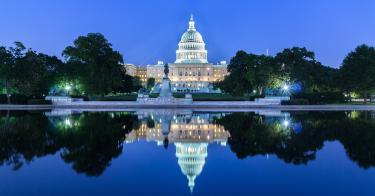President Trump inherited more than 130 vacancies on the federal courts when he took office and the White Househas steadily rolled out judicial nominations. But the Senate has confirmed only six judges this year, including Justice Neil Gorsuch.
Today, vacancies have ballooned to more than 160, including several judges who announced they will retire but will stay on until a specific date or when their successors are confirmed. Meanwhile, 47 judicial nominees are pending in the Senate.
The reason? A little-known Senate practice called “blue slips.”
Since 1917, the Senate Judiciary Committee has asked senators from a nominee’s home state for their opinion before holding a hearing or further evaluating the nominee. Senators select “I approve” or “I object” on a blue slip of paper. While the president has the power to appoint judges — with the advice and consent of the Senate — under this 100-year-old tradition, a single senator may be able to bring a confirmation to a crashing halt.
Today, instead of checking a box, some Democratic senators are simply holding on to those blue slips. The tactic effectively keeps a nominee in limbo.
The administration is trying to break the logjam. A White House spokesperson told Politico, “We are working with and extensively consulting all senators nationwide in order to complete the nomination process.”
The administration insists it has tried to consult home-state senators for all vacancies, but Senate Democrats claim otherwise. It appears, however, that some are refusing to play fair. According to Carrie Severino, chief counsel of the Judicial Crisis Network, some senators “are not even returning phone calls from the White House.”
“You can only do so much to confer with people who are being intransigent.” Ms. Severino added.
That intransigence rankles other senators eager to fill vacancies. While stipulating the importance of Senateconsultation, Sen. John Cornyn, Texas Republican, has warned his foot-dragging colleagues: “We’re not going to let an individual senator reverse the outcome of the last presidential election.”
The blue-slip gambit is currently impeding the confirmation of several appeals-courts nominees. Since the Supreme Court hears only a small fraction of our nation’s cases each year, the federal appeals courts are often the last word for litigants.
The appeals courts are also considered the training grounds for future Supreme Court justices; all but one of our current justices served as an appellate judge before being nominated to the Supreme Court. Liberals can be sorely tempted to delay or kill nominations of young, bright, conservative judges who have the potential to serve for decades.
Currently 11 appellate nominees are pending before the Senate — some held hostage by Democrats’ refusal to return their blue slips.
Future nominees may have blue-slip problems as well. There are 11 more appellate vacancies across the country the president will soon fill in New York, New Jersey, Pennsylvania, Ohio, Illinois, California, Hawaii, Washington, and New Mexico. Each of those states has at least one Democratic senator; seven of them have two.
So how should the Senate Judiciary Committee handle this blue slip problem? With respect to appellate nominees, it’s time to ditch the blue slip.
Blue slips make some sense for district court nominees; they hear only cases from the state where they sit. Appeals court judges, on the other hand, hear cases from all the states within their circuit. It’s not fair to let senators from just one state hold up a nominee for several.
Though the Senate has used blue slips for over a century, the practice has varied depending on who occupies the White House and who leads the Senate Judiciary Committee. And it’s fully within the discretion of Sen. Chuck Grassley, Iowa Republican and the panel chairman, to ditch them.
With so many vacancies to fill, it makes little sense to allow a handful of senators to abuse blue slips to score political points.
This piece originally appeared in The Washington Times




